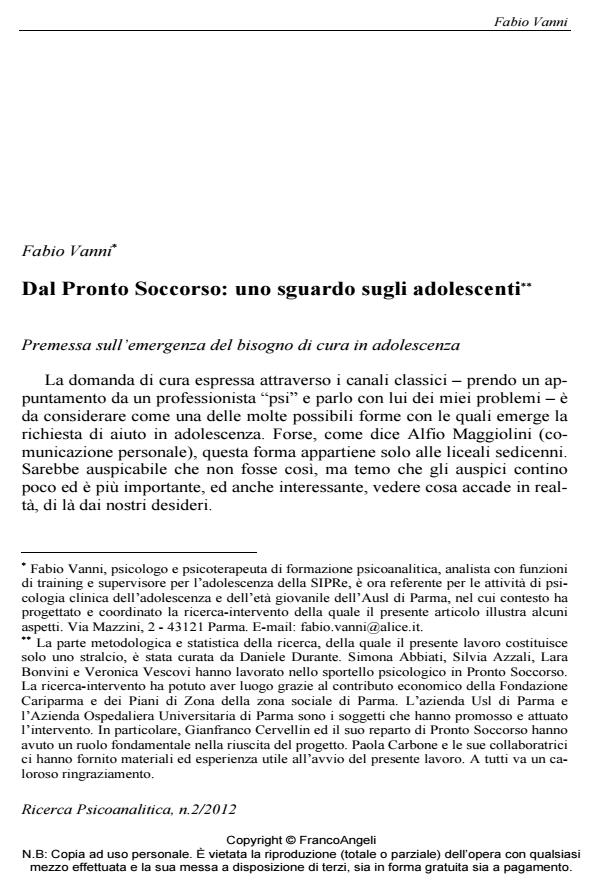Adolescents in an E.R.
Journal title RICERCA PSICOANALITICA
Author/s Fabio Vanni
Publishing Year 2014 Issue 2014/1
Language Italian Pages 20 P. 91-110 File size 777 KB
DOI 10.3280/RPR2014-001007
DOI is like a bar code for intellectual property: to have more infomation
click here
Below, you can see the article first page
If you want to buy this article in PDF format, you can do it, following the instructions to buy download credits

FrancoAngeli is member of Publishers International Linking Association, Inc (PILA), a not-for-profit association which run the CrossRef service enabling links to and from online scholarly content.
This paper describes the methodology and outcomes of an active research carried out for two years at the Emergency Room of the university clinic of Parma in collaboration with the local national health service unit. Psychological consultation interviews have been carried out with 1,080 persons aged between 14 and 24 accessing the ER for traumatic events. The material collected in the interviews, made up of a personality test and data emerged from a semi-structured conversation, has been statistically processed and compared with a control group in order to answer some questions concerning the psychopathologic features of adolescents and young adults entering an ER. The research also evaluated the possibility of using an ER as the contact point for providing psychological treatment to persons that would otherwise escape contact with traditional social and medical assistance.
Keywords: Adolescents, young adults, Emergency Room, psychopathology, trauma, psychological consultation
Fabio Vanni, Dal Pronto Soccorso: uno sguardo sugli adolescenti in "RICERCA PSICOANALITICA" 1/2014, pp 91-110, DOI: 10.3280/RPR2014-001007